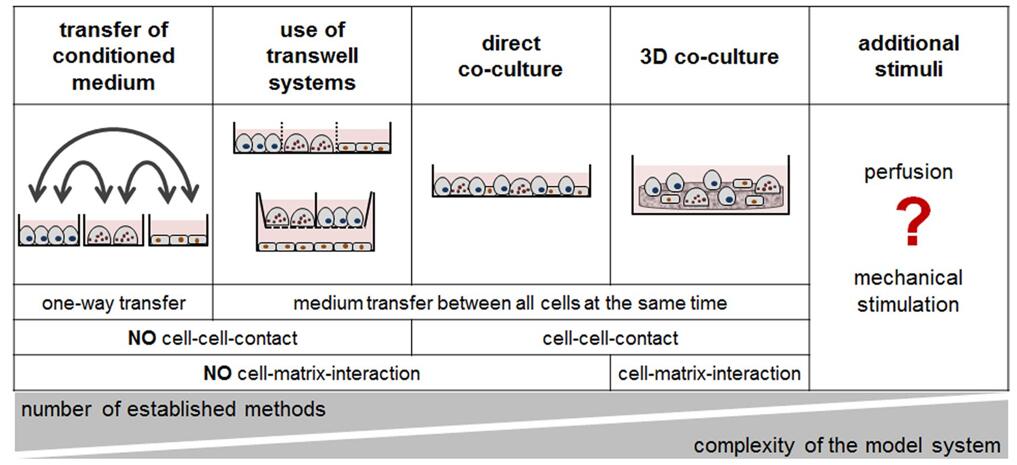Metabolic bone diseases are a group of disorders characterized by abnormalities in bone structure, strength, and mineralization due to disturbances in bone metabolism. These diseases often result from imbalances in bone remodeling, the process through which old bone is resorbed by osteoclasts and new bone is formed by osteoblasts. Metabolic bone diseases involve interactions between different cell types.
 Figure 1. Advantages and disadvantages of the different available in vitro bone models. [1]
Figure 1. Advantages and disadvantages of the different available in vitro bone models. [1]
Co-culture systems, where osteoblasts, osteoclasts, and other relevant cells are cultured together, help simulate the dynamic interactions occurring in bone tissue. Creative Bioarray's cell co-culture models offer an efficient means for researchers to gain insights into bone metabolic diseases and explore the potential of novel therapeutic strategies. By utilizing these models, researchers can comprehensively investigate cell signaling pathways, gene expression patterns, cytokine production levels, as well as evaluate drug responses and other interventions relevant to bone health and disease.
Reference:
1. Ehnert, Sabrina et al. "Use of in vitro bone models to screen for altered bone metabolism, osteopathies, and fracture healing: challenges of complex models." Archives of toxicology vol. 94,12 (2020): 3937-3958. doi:10.1007/s00204-020-02906-z
Online Inquiry